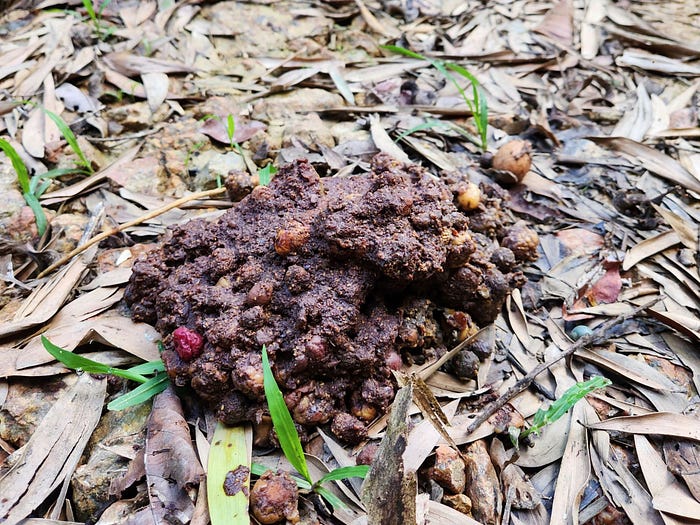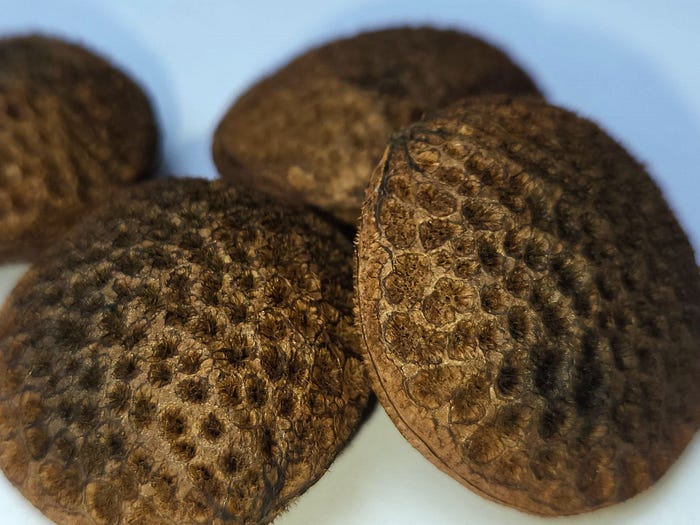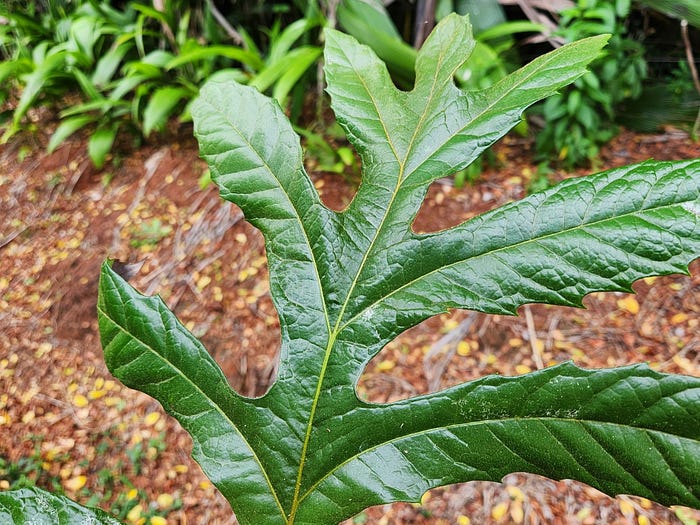Look at this handful of amethysts and lapiz lazuli! These jewels are fruit of the Atherton Oak (Athertonia diversifolia, Proteaceae), a tree that grows only in a few rainforest areas of Far North Queensland — the Atherton Tablelands, Mt Lewis, and Mt Sorrow. A friend picked these from trees on her property. Most of the seeds will go to a botanic garden for their living collection. The rest I will grow at home.
In the build up to the Wet Season, the unsettled atmosphere brings afternoon storms. These storms appear from nowhere. Lightning slices the sky and thunder cracks and roars, crashing against the granite walls of choorechillum (Mt Bartle Frere) and wooroonooran (Mt Bellenden Ker). The rain is heavy and sharp, rattling on corrugated iron roofs and pounding against red earth. When the storms die, they leave behind stifling humidity.
The build up is a time when plants thrive and people go troppo.
We're all waiting for the monsoon to sweep down from the north.
It is raining here. It has been raining since Thursday, when Tropical Cyclone Jasper ambled in from the Coral Sea. Variously described as 'barrelling' (it wasn't) and then 'inching' (it wasn't), TC Jasper wavered in intensity, finally making landfall near the Daintree as a Category 2 system.
At Whyanbeel Valley, Daintree, more than 1.2 metres of rain fell over four days. Where I am, on the Atherton Tablelands, it was about half that. But the precipitation hasn't finished yet. The former cyclone is now a tropical low and has stalled over Cape York Peninsula.
This is not monsoon rain. This is record-breaking.
The fruit of Atherton Oak looks enticing, but peeling away the thick blue skin and the thin pale flesh reveals a tougher inner layer, the endocarp. This tough woody case protects a single seed. It takes a lot of effort to break open the endocarp, requiring a hammer, bench-mounted vice or hefty rock. Tree-climbing Giant White-tailed Rats (Uromys caudimaculatus) don't need implements. Their teeth open coconuts and tin cans. They gnaw through the Atherton Oak fruits with ease.
The contributions of these rodents is recorded in Australian Tropical Rainforest Plants.
The seeds of this species are occasionally eaten by people in North East Queensland. It is very difficult to find whole seeds on or under the trees growing in rainforest as the rats seem to get every seed while still attached to the tree and only drop the empty shells to the ground.
My friend was lucky to get so many intact fruit. The rats must have been elsewhere, perhaps sheltering from the deluge.



But their fondness for Atherton Oak seeds works in the tree's favour. Like squirrels, Giant White-tailed Rats hoard what they can't eat in one go. In doing so, they spread seeds around the rainforest. They will also raid Southern Cassowary poop, which results in a two-stage dispersal process.
Other (smaller) rodents, such as Fawn-footed Melomys (Melomys cervinipes) and Bush Rat (Rattus fuscipes), as well as the marsupial Musky Rat-kangaroo (Hypsiprymnodon moschatus) also contribute to Athertonia populations. They chew away the soft tissue (pericarp), exposing the seed case to the elements. This tissue removal greatly increases germination rates of Athertonia. These furry four-footed gardeners tend the rainforest, as they go about their business.
I am doing much the same. Not eating the fruit, I hasten to add, but cleaning it off the endocarp with a blunt knife and toothbrush. After that, I will make a cache to send off to the botanic garden and then put the remainder in potting mix.
Right now, out in the rainforests of the Atherton Tablelands, Mt Lewis and Mt Sorrow, Athertonia seeds are ready to grow, planted by unwitting rats and watered by a cyclone.
Find more stories about Australian Proteaceae here:

